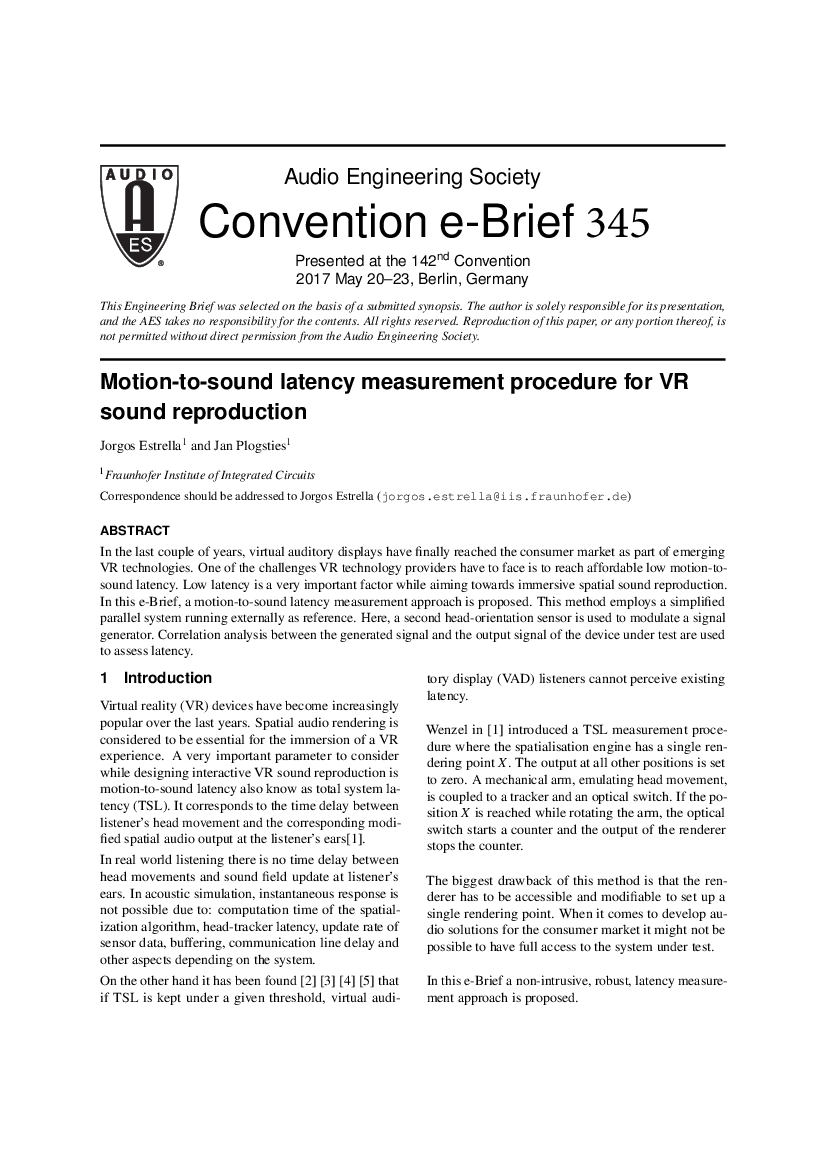Home / Publications / E-library page
You are currently logged in as an
Institutional Subscriber.
If you would like to logout,
please click on the button below.
Home / Publications / E-library page
Only AES members and Institutional Journal Subscribers can download
In the last couple of years, virtual auditory displays have finally reached the consumer market as part of emerging VR technologies. One of the challenges VR technology providers have to face is to reach affordable low motion-to-sound latency. Low latency is a very important factor while aiming towards immersive spatial sound reproduction. In this e-Brief a motion-to-sound latency measurement approach is proposed. This method employs a simplified parallel system running externally as reference. Here, a second head-orientation sensor is used to modulate a signal generator. Correlation analysis between the generated signal and the output signal of the device under test are used to assess latency.
Author (s): Estrella, Jorgos; Plogsties, Jan
Affiliation:
(See document for exact affiliation information.)
AES Convention: 142
Paper Number:345
Publication Date:
2017-05-06
Import into BibTeX
Session subject:
Spatial Audio—Binaural
Permalink: https://aes2.org/publications/elibrary-page/?id=18720
(489KB)
Click to purchase paper as a non-member or login as an AES member. If your company or school subscribes to the E-Library then switch to the institutional version. If you are not an AES member Join the AES. If you need to check your member status, login to the Member Portal.

Estrella, Jorgos; Plogsties, Jan; 2017; Motion-to-Sound Latency Measurement Procedure for VR Sound Reproduction [PDF]; ; Paper 345; Available from: https://aes2.org/publications/elibrary-page/?id=18720
Estrella, Jorgos; Plogsties, Jan; Motion-to-Sound Latency Measurement Procedure for VR Sound Reproduction [PDF]; ; Paper 345; 2017 Available: https://aes2.org/publications/elibrary-page/?id=18720